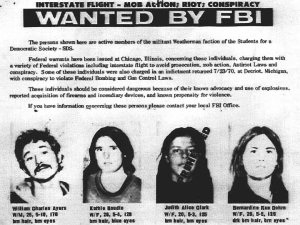Following the events of ,”Days of Rage”, S.D.S facilitated another national conference in Flint Michigan on December 26th 1969, until December 31st. This meeting was dubbed the “Flint War Council”, based on the emphasis the meeting had on John Jacobs call for violent revolution and direct action social movement organization. This event called for the necessity of armed struggle and guerrilla warfare being a necessity in order to combat American imperialism. During this time violence justification seminars where conducted, as well as group discussion on ideology and goals. Rudimentary military training was conducted and copies of Carlos Marighella’s “Manueal of The Urban Guerilla” were circulated.
The first major change produced by the “War Council” was the dissolution of S.D.S. In order to distance the group from the non-violent protest history of their past, as well as the focus on labor rights. Its was officially decided that the S.D.S would be taken over by the Weatherman. This radical change however, caused a major backlash, soon after this meeting many local chapters of S.D.S disbanded and later the national headquarters was closed down. This limited the Weather Underground’s ability to communicate with the mainstream culture.
The Second and more prominent decision of the “War Council” was the Weathermen’s decision to take up arms, go underground, and begin the militant guerrilla war against American imperialism. In an effort to promote direct action. Fallowing the writing of Carlos Marighella, and creating a formation based on Che Guevera’s revolutionary “Foco”, method The Weather Underground organized the creation of hidden cells throughout the nation (See Guerrilla Militancy: A Viable Option?). Each would be under it’s own command and would conduct their own attacks. They would also all be in communication with each-other through the unofficial primary cell in New York City. They then decided that the first planned attack of the Underground would be in New York against Judge John Murtagh, who at the time was overseeing the trial of “Panther 21”.
The “War Council”, ended with John Jacobs speaking against the complacency of mainstream America, and the pacifism seen in you prto-tests to this day. He then continued to speak about how the youth of today, where the high energy members of tomorrows world, and through armed struggle and conflict, would create a new world driven by sex and drugs, that they where against all things considered good and decent by the American mainstream. He finalizes by saying “We will burn and loot and destroy. We are the incubation of your mother’s nightmare.” The Weather Underground was then born.

